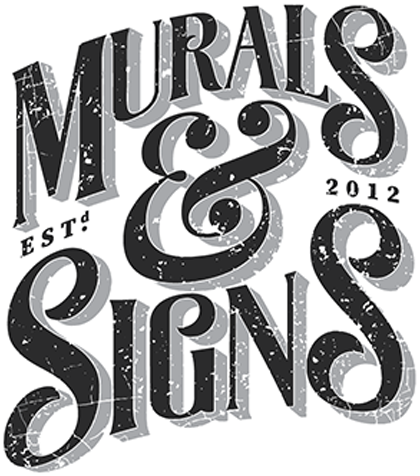Creating captivating and impactful commercial murals is an art form that requires a blend of creativity, technique, and the right materials. If you’re a beginner looking to dive into the world of commercial mural painting, this article is your comprehensive guide. We’ll explore essential techniques and materials to help you embark on your journey to crafting stunning commercial murals that leave a lasting impression.
Understanding the Art of Commercial Murals
Before we delve into techniques and materials, it’s important to grasp the essence of commercial murals and their significance in modern design and branding.
The Power of Commercial Murals
Commercial murals have evolved beyond mere aesthetics; they are powerful tools for businesses to tell their stories, connect with their audiences, and transform their spaces into immersive experiences that resonate.
Techniques for Creating Striking Commercial Murals
Mastering the techniques that underpin successful mural creation is a crucial step for beginners. Here, we’ll explore several effective methods that can bring your creative visions to life.
Sketching and Planning
Begin your mural journey with a solid plan. Sketch out your design on paper, considering the dimensions and context of the space. This blueprint will serve as your guide throughout the painting process.
Grid Method for Scaling
The grid method involves dividing your design into a grid and then transferring each grid square’s contents to a larger surface. This technique ensures accurate proportions and helps beginners manage complex compositions.
Projection Mapping
Modern technology has introduced projection mapping, where you project your design onto the surface using a digital projector. This method aids in scaling and provides an outline for your mural, making the painting process more manageable.
Layering and Depth
Create depth and dimension in your mural by mastering layering techniques. Begin with the background and gradually add layers of detail to the foreground. This approach adds visual interest and engages viewers on multiple levels.
Trompe-l’oeil Illusions
Trompe-l’oeil, a French term meaning “deceive the eye,” involves creating realistic optical illusions. This technique adds an element of surprise and intrigue, making viewers pause to marvel at the clever artistic manipulation.
Essential Materials for Mural Painting
Equipping yourself with the right materials is crucial for a successful mural painting experience. From brushes to paints, each element plays a role in bringing your mural to life.
High-Quality Paints
Invest in high-quality acrylic paints that offer vibrant colors and durability. Acrylics are versatile and can be applied to various surfaces, making them an excellent choice for muralists.
Brushes for Different Effects
Different brushes yield different effects. Round brushes are great for fine details, while flat brushes cover larger areas efficiently. Experiment with various brush types to achieve the desired textures and strokes.
Durable Surfaces
Choose a durable surface for your mural. Exterior-grade surfaces withstand weather elements, while primed canvases offer a smooth base for indoor murals. Ensure your surface is clean and properly prepared before painting.
Sealants and Varnishes
Once your mural is complete, protect it with sealants or varnishes. These coatings shield the artwork from UV rays, moisture, and pollutants, preserving its vibrancy for years to come.
Nurturing Your Artistic Journey
Embarking on a mural painting journey as a beginner requires dedication and a commitment to growth. Here are some tips to nurture your artistic development.
Practice and Patience
Mural painting is a skill that develops over time. Embrace the learning process, and don’t be discouraged by initial challenges. Practice regularly and allow yourself the patience to improve.
Seeking Inspiration
Draw inspiration from various sources, including nature, architecture, and other artists. Attending art exhibitions and workshops can expose you to new techniques and styles that enrich your creativity.
Embracing Feedback
Share your work with fellow artists, mentors, or online communities. Constructive feedback offers fresh perspectives and valuable insights that can propel your skills to new heights.
Persistence Pays Off
Commercial mural painting is a journey that requires persistence. Keep refining your techniques, experimenting with new approaches, and honing your unique artistic voice.
Conclusion
Embarking on the path of commercial mural painting as a beginner is an exciting endeavor filled with creative opportunities. By understanding essential techniques and selecting the right materials, you can bring your visions to life on walls, engaging audiences and leaving a remarkable impact. Remember, as you progress and nurture your skills, the art of commercial murals can become not just a passion, but a powerful tool for storytelling and expression in the world of design and branding.
Achieving long-lasting results with commercial mural materials
